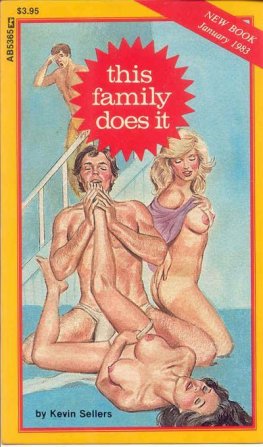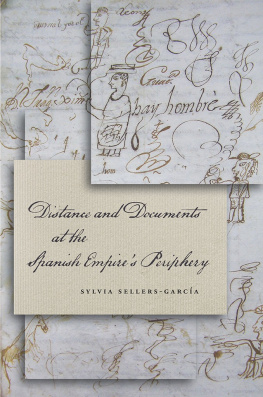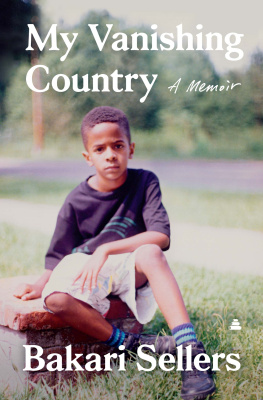M R. S TRANGELOVE
A Biography of
PETER SELLERS
ED SIKOV

To Edward Hibbert,
who makes my work possible.
To Bruce Schackman,
who makes the rest possible.
Some forms of reality are so horrible we refuse to face them, unless we are trapped into it by comedy.
To label any subject unsuitable for comedy is to admit defeat.
Peter Sellers
CONTENTS
PART ONE
DOWN THE RABBIT HOLE:192557
PART TWO
IN WONDERLAND:195764
PART THREE
THROUGH THE LOOKING GLASS:196480
PART ONE
DOWN THE RABBIT HOLE
192557
Who in the world am I? Ah, thats the great puzzle!
I n 1924, a low-end music hall performer called Peg Sellers gave birth to a baby boy. She named him Peter. Peg had long been dominated by her imposing impresario of a mother, Welcome Mendoza, and she was eager to focus her own fierce maternal drive on the tiny boy. But Peter Sellers died quickly and was buried and never mentioned again.
Welcome Mendoza was, truly, the outlandish name with which Peg Sellerss mother was born, though she changed it twice along the way: first to Marks when she got married, then to Ray when she elbowed her kids onto the music hall stage. Showmanship and aggression ran strong in this family. Welcome Mendoza Marks, who started calling herself Belle Ray when she became a vaudeville manager, was the granddaughter of the most renowned Jewish prizefighter of the eighteenth century.
Strange to say, there were many brawling Jews in that era: Aby Belasco, Barney Star of the East Aaron, Lazarus the Jew Boy, the curiously named Ikey Pig. But the best of them, the strongest and scrappiest, was Daniel Mendoza, whose fabulous life in the ring was set up, however indirectly, by a gang of Jewish killers. In the spring of 1771, a flourishing group of circumcised thieves (led by a doctor, of all people) was busily breaking into Chelsea houses and successfully removing items of interest. The crime spree came to an abrupt end in June when, in the midst of a heist, they made the mistake of killing somebodys servant. The doctor and his gang were quickly apprehended, tried, convicted, and hanged, but the rest of Londons Jewish population felt a more long-lasting effect. I have seen many Jews hooted, hunted, cuffed, pulled by the beard, spit upon, and barbarously assaulted in the streets, a contemporary wrote. Dogs could not be used in the streets in the manner many Jews were treated.
Daniel Mendoza was five years old at the time of the Chelsea murder, the consequence being that throughout his childhood and adolescence no Jewish boy in London was safe from Christian harassment. Daniel was naturally tough, even belligerent, and he learned to protect himself. When he got older he trained other boys to fight as well, and eventually, as Mendozas contemporary noted, it was no longer safe to insult a Jew unless he was an old man and alone. Thrashing others was not Daniels first career choice, however. After his bar mitzvah he set himself on course to becoming a glassmaker, but his apprenticeship came to a quick end when he couldnt help but beat up the glaziers son. He moved on to assist a greengrocer but spent so much time physically avenging the grocers wife against the insults of shoppers that he soon moved on again, this time to a tea shop, where he responded to a customers complaint about the service by clobbering himfor forty-five minutes. The bruised patron, however, had sense. He responded not with legal action but with sound advice: He convinced Daniel to become a professional fighter.
Until his great-great-grandson surpassed him in both fame and fortune, Daniel Mendoza was his familys brightest star. (The great-great-grandson acknowledged this fact in several of his films by hanging portraits of Mendoza in the background; a certain inept French detective, for instance, is an admirer of Daniel Mendoza.) The prizefighter left a curious series of personality bequests. Like his descendent, Mendoza liked to assume other identities if his own grew dull. Mendoza and his friends once decided to go out on the town in the guise of seamen and were promptly arrested, having been mistaken for group of sailors who had just jumped ship. Like his descendent, Mendoza didnt quit show business after facing a hostile audience. Theres the story of Mendoza showing up at a Purim pageant and being hired on the spot to perform; the audience booed, the manager refused to pay, and Mendoza, never one to back down from a dispute, simply persisted in his demands until he got his fee. And he was inevitably the victim of trouble, never the cause. As described by a contemporary, he always was the injured party. In his own estimation, never was there such a mild mannered man as he. The fights just seemed to seek him out. Can a sense of victimization be genetic?
Mendoza made and lost a vast amount of money in his life. His abiding concern for the box office led him to stage one of several grudge matches with his archrival, Richard Humphreys, on the riverbank, specifically to keep gatecrashers away. He never imagined that they would simply arrive by boat, a fact that bugged him for the rest of his life. The Prince of Wales introduced his friend Mendoza to his father; thus Daniel Mendoza rode the royal carriage to Windsor Castle and met George III. They strolled on the terrace together, the King of England and the street fighter from the East End. It was the first time the monarch had ever spoken to a Jew. After winning his first professional bout and earning the sum of five guineas, he went on in 1785 to whip a fighter called Martin the Butcher in a record twenty minutes and earned, thanks to the patronage and friendship of the Prince of Wales, more than 1,000a fantastic sum at the time.
Mendoza tended to spend more than he earned, a common enough failing, and more than once he spent time in debtors prison. As he aged, prizefighting had to be supplemented with catering. Process serving. Recruiting soldiers. Innkeeping. Inciting a mob. Baking. Mendoza died in 1836 at the age of seventy-three, leaving a wife, eleven children, and no money.
Daniels son Isaac married a woman named Lesser, who bore Welcome. Welcome married Solomon Marks and bore Peg. Peg married Bill Sellers. In 1925 Peg and Bill had another baby to replace the dead one. They called him Peter, too.
Welcome Mendoza Marks was prolific and shrewd, not only as a businesswoman but as a mother. She birthed, fed, and raised a total of eight sonsGeorge, Harry, Chick, Alfred, Lewis, Dick, Moss, and Bertand two daughters, Cissie and Peg, whose real name was Agnes. When Solomon Marks died, Welcome was dynamic enough to corral her ten offspring at a house at Cassland Crescent, Hackney, and press upon them the idea of a family theater troupe and management company. She called it Ray Brothers, Ltd., having decided that Belle Ray was a more fitting name for a woman of the theater, though everybody around her called her Ma.
Ma Ray was Mama Rose with skill, better luck, and more children. She never aimed at art. Commerce was her goal, and the more the better. From nothing, she came to manage forty other vaudeville companies in addition to her own, though Ray Brothers, Ltd., was always her chief concern. The company survived, even thrived, but the hard fact was, vaudeville was already on its way out. As clever as Ma was as a theater manager, a more prescient enterprise would have been the business of motion picture exhibition. And even within the slowly declining world of the English music hall, Ray Brothers were never top-notch. They dont seem to have ever played Londononly provincial theaters, a heavy component of which were summer seaside resorts.
Next page








